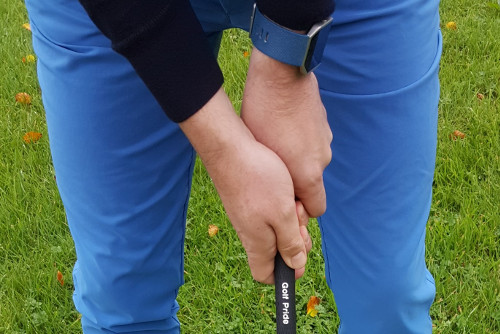
Today’s blog is about club face alignment, which follows on nicely from my previous blog, The golf grip is the key to a good golf swing.
Your grip is the biggest influence over your club face angle, and your club face angle is the biggest influence over where your ball goes. If you fight a big hook or a nasty slice then there’s a good chance that your grip is a little off. Here’s why…
The neutral grip
The hands are neither turned to the left or right on the grip. The palms pointing neither to the sky or to the ground.
A strong grip
The hands are turned to the right of the grip. The left-hand palm points to the ground and the right-hand palm points to the sky.
A weak grip
The hands are turned to the left. The left-hand palm is to the sky the right-hand palm points to the ground.
A combination grip
Both palms pointing upwards.

Now, when we swing the club and return the club face to the ball, the hands are going to want to return to their natural, neutral hanging position. If we allow that to happen then we’ll get the following default club angles.
Neutral grip, a square clubface
Strong grip, a closed clubface (pointing left)
Weak grip, an open clubface (pointing right)

(The combination grip will open or close the clubface depending on which hand dominates, so you can miss right or left)
Now, many great players have strong and weak grips. Their techniques have developed with some compensations to counter the effect on the club face angle, or they simply go with a natural fade or draw pattern.
However, if you’re hitting big hooks or slices and your grip (either one or both hands) is well off neutral, then it may be worth improving it, or you’ll forever more be fighting where your clubface angle wants to default to at impact.
Good golfing!



